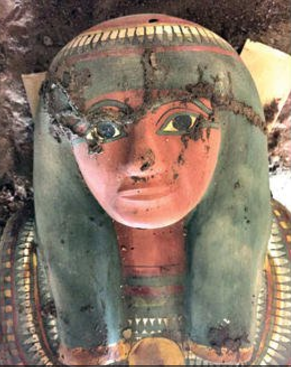A group of Spanish archeologists dug up a thousand-year-old mummy in “very good condition” near the town of Luxor in Southern Egypt, a report from Arab News said.
The discovery, which is presumed to date back to between 1075 and 664 BC, was bound with linen and stuck together with plaster.
Judging by the brightly colored wooden sarcophagus, scientists believe that the tomb belonged to a nobleman, Amenrenef, who was “a servant of the royal household.”
His tomb was buried near a temple from the era of fourth-millennium warrior king Thutmose III, which also gives light to his supposed royal lineage.
Myriam Seco Alvarez, the archaical team’s head, described the mummy as bedecked with “many colorful decorations recalling religious symbols from ancient Egypt, such as the goddesses Isis and Nephtys displaying their wings, and the four sons of Horus.”
The practice of wrapping bodies and mummifying remains to preserve them in death dates as far back as 4500 BC.
The city of Luxor, meanwhile, houses over half a million people on the banks of the Nile river, which is surrounded with temples and tombs built by ancient Egyptian pharaohs. Khristian Ibarrola
RELATED STORY:
2 previously unknown chambers discovered inside Giza pyramid
